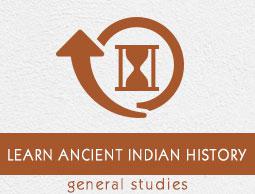Gupta period was considered as the golden phase of Indian literature.
The wonderful literature was produced in prose, poetry, drama, and grammar. It is the noticeable product of the system of education and learning.
The Puranas preserved the traditions, legends, moral codes, religious, and philosophical principles. They are eighteen in number.
The Smritis are metrical texts containing the rules and regulations and laws for the guidance and governance of the society.
Smritis are based on dharmasutras and grihyasutras of Vedic literature. They are written in verse.
Some additions and alterations have been done to make Smritis suitable to the changing conditions of society.
The commentaries on the Smritis were written after the Gupta period.
The compilation of Ramayana and Mahabharata was completed by the 4th century A.D.
Kalidas has written the best works in poetry, drama as well as in prose. His kavyas such as Meghaduta, Raghuvamsa, and Kumarasambhava, and dramas such as Abhijnashakuntalam are the best literary works of this time and it is considered as the best even today. These works have been translated into many languages.
A few inscriptions of the period are −
The Allahabad pillar inscription composed by Harisen;
Mandsor inscription composed by Vatsabhatt; and
Junagarh rock inscription, Mehrauli Pillar inscription, Aihole inscription composed by Ravikriti.
These all inscriptions (listed above) consist most of the characteristics features of Sanskrit kavya.
The most notable in the field of drama were Bhasa, Sudraka, Kalidas, and Bhavabhuti.
Mrichchakatika (written by Sudraka), is considered one of the best plays of ancient India. This play is about the love of a Brahman with the beautiful daughter of a courtesan.
Vishakhadatta had written two plays, namely Mudrarakshasa and Devichandraguptam.
Famous plays written by Kalidas are Malavikagnimitram, Abhijnanashakuntalam, and Vikramorvasiyam.
Uttararama-charita and Malati-Madhava were written by Bhavabhuti.
Panchatantra, written by Vishnu Sharma, is one of the most famous works of this period. It was translated into Persian and Arabic in the 8th century A.D. and has been translated into almost all European languages by the time.
The popular work Hitopadesa is based on the Panchatantra.
Harshacharita is the biography of Harsha written by Banabhatta. It is an outstanding work of the period.
The development of Sanskrit grammar (based on Panini and Patanjali) was also seen in this period.
Bhartrihari composed three Shatakas. He had also written a commentary on the Mahabhasya of Patanjali.
The compilation of the Amarakosha by Amarasimha is memorable work of this period. Amarasimha was a popular personality in the court of Chandragupta II.
The Prakrit was popular language of the Gupta period (as it was earlier).
The Svetambara Jain canon have been written in Ardha-Magadhi Prakrit.
The religious texts of the Digambara Jain (of south India) were written in the Maharashtri and Sauraseni Prakrits.
The commentaries on Buddhist texts were written in Pali.
‘Prakritaprakasha’ written by Vararuchi and ‘Prakritalakshana’ written by Chanda are the well-known grammar works on Prakrit and Pali language.
‘Katyayanaprakarna’ is a Pali grammar book.







